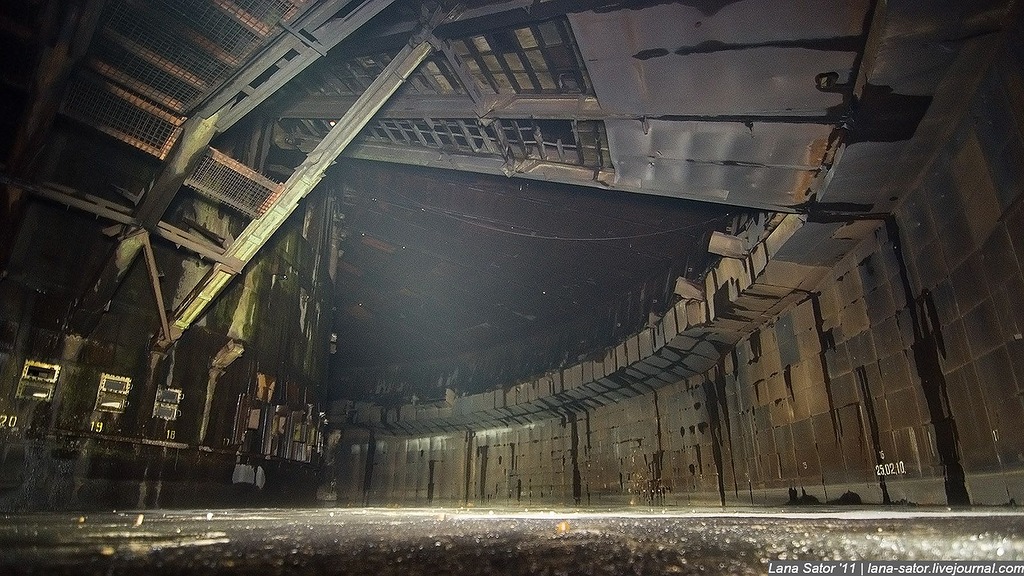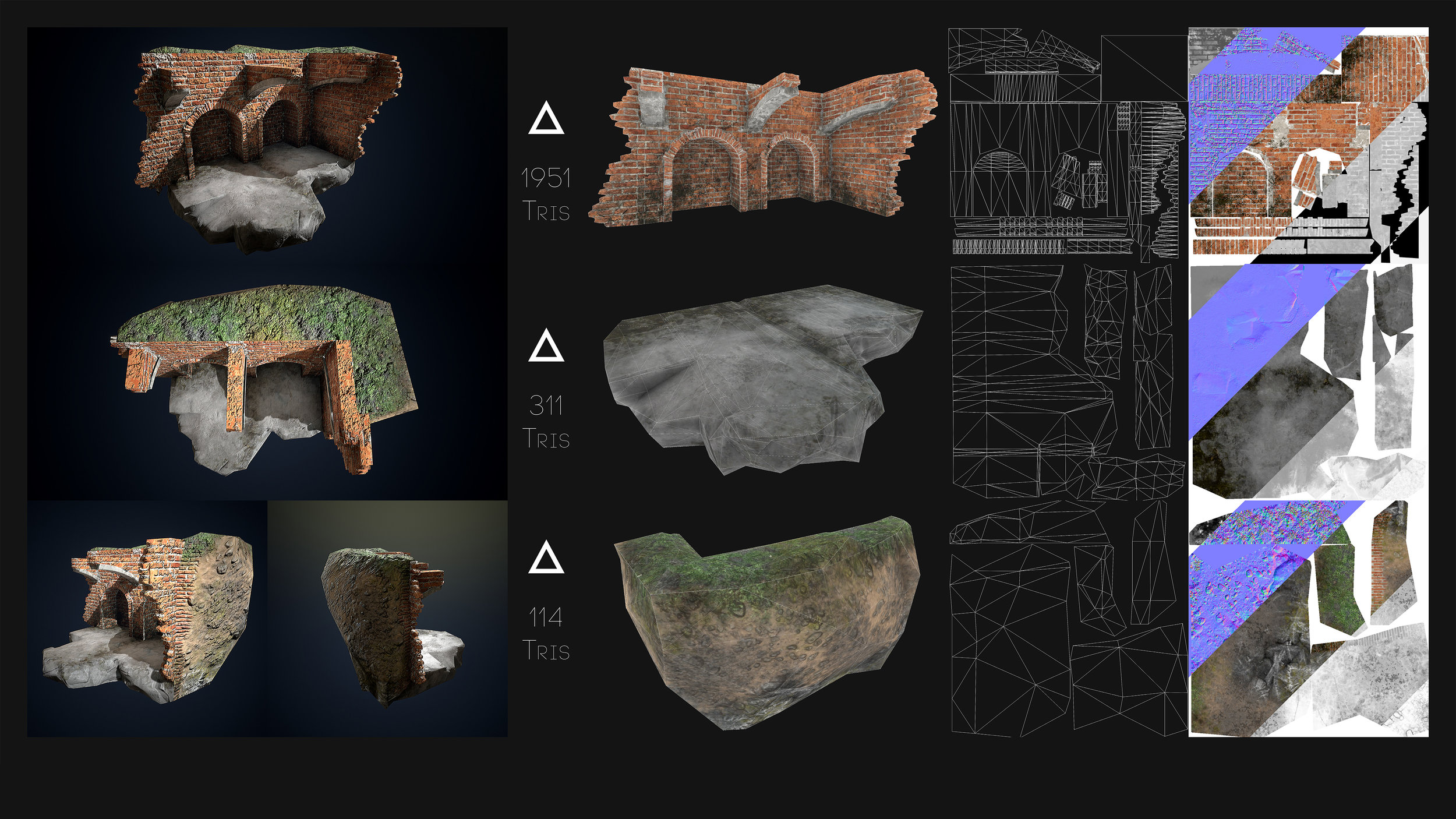Project Drone
Project Drone was a two-part practical-level design exercise. It started with a 3D diorama that inspired the development of the prototype. The technical art and level of design skills learned during the development of the diorama were further used and enhanced during the development prototype.
I independently designed the concept, created a diorama from scratch, and made a playable prototype in UE4, where sunlight-constrained player movement as a way of reducing workload while making an “open” world game.
Engine: Unreal Engine 4
Team/Role: Made independently
Duration: 5 months
Highlights
▼
Objective
Create an open space with complete freedom of 3-dimensional movement while constraining the players to a linear path and a small environment.
Challenges
Designing a thing that can navigate in all three dimensions that players would inherently understand from real life and not rely on other games’ literacy.
How to logically constrain players in a perceivably open space in a consistent way that is easy to understand.
How to create a narrative that ties all the solutions together.
Challenge 1
Designing a character that can navigate in three dimensions relying only on real-life literacy for reference.
Solution
I explored multiple organic and nonorganic things that can freely navigate in 3d space. Drones came to mind as the best option as they can be controlled remotely by a human, which creates flexible options for what can happen to the drone without eliminating a relatable character. This also makes it possible to have different drones or characters, making the solution adaptable and robust to future challenges.
Challenge 2
How to logically constrain the players in a space that could be perceived as open in all directions.
Solution
Many things could be molded into shapes to create navigable spaces; however, very few also make it feel open. Light and god rays came to mind as something that could create negative space in the form of shadows—forcing the players to navigate through the shadows of some environment. This would also allow players to create their shadows to make navigable spaces. This solution sounded novel and subverted conventional navigation heuristics while being easy to understand from the perspective of avoiding sunlight.
Challenge 3
How to tie together drone navigation and avoidance of sunlight.
Solution
Sunlight creates radiation that damages electronics, so I picked a post-apocalyptic nuclear winter where the atmosphere was heavily stripped away, causing enough shading for a small number of humans to survive underground while creating enough radiation to damage electronics. I do not expect players to question how accurate the physics is on this as it is framed in a believable enough way and fun to play.
One might ask why characters would not go out at night; later, the game reveals that deadly things lurk in the dark, so roaming around at night is too dangerous. This could have been an interesting mechanic that I did not get to prototype, but having a day-night cycle would be pretty interesting to test (not necessarily fun or good to play or work with) as it would make incredible depth to simple environments and interactions and put elegant time pressure on the players. However, designing such spaces would be difficult, and players might find the moving shadows frustrating.
This resulted in a concept where characters operate a drone remotely through a collapsed ICBM silo, the ruins of which create shadow “tunnels “ that players need to fly through. The environment feels temptingly open but deadly. As players fly around, vivid purple oddities are scattered around the environment, guiding them around while god rays highlight harmful sun rays.
Drone Diorama
Diorama that served as inspiration for the game and to explore the 3D modeling pipeline
INSPIRATIONS AND RESEARCH
The diorama was constructed from the memory of places I have seen on purpose with 0 references. On the other hand, the Black Soot POC required more research as it needs to serve the gameplay functions and look like a believable ICBM silo I have not seen in the past.
District 9 movie inspired the exploration of the world through a recording device.
Dear Esther, Inside, Dark Souls, The Long Dark, PT, and Alien Isolation inspired the level design structure and the overall atmosphere of the level.
Atlas Hardened ICBM silo, and TITAN 2 nuclear ICBM silo was used as a reference for the level design architecture.
YARS Launch at the TOPOL silo, ICBM bombing Craters, CAPE Launch control room, and Lana Sator's photographs was used as decorative elements references.
Overview
The main objective was to improve my level design skill and understanding of the entire level development pipeline by practicing level design principles and developing all assets independently.
The first part began as a diorama. As a result, the most challenging aspect was learning Substance Painter and Designer and UE4 in 3 months while designing and assembling the diorama and developing all the models, textures, materials, and effects.
The second part of the project was strongly inspired by part one. However, the project's objective shifted from developing a small environment to one that could be freely explored. Therefore, in Black Soot, the player controls a drone that is constrained by the walls of the ICBM silo and sunlight. This allowed the environment to be open while keeping the flying character in a confined area.
Overview
All the assets in the diorama were developed from start to finish by myself. I strongly relied on the core principles of level design during the project's development.
The diorama format was chosen because it can be more effectively saturated with small and unique level design details, and it is much easier to control every detail without worrying about programming. This project also expanded my abilities at troubleshooting 3d environments at various stages of development.
Furthermore, the challenge of designing this composition, learning how to make a diorama, learning substance, and assembling it all in UE4 in 3 months allowed me to practice my planning skills and further improve my focus and attention to detail.
ASSET DEVELOPMENT
Developing all assets for the diorama started with research into their specification, followed by a breakdown into kits and trim pieces.
DIORAMA DEVELOPMENT PROCESS
The development process for the diorama involved four stages:
Previz using photobashing
Greyboxing
Block-out and integration in UE4
Set dressing and polish using a custom sharpening post process.
Black Soot
Exploration game and a level design exercise with a unique obstacle mechanic.
LEVEL DESIGN
The whole level went through ~20 interactions. Each iteration was designed on grid paper and Greyboxed.
The process of designing Black Soot’s level began by thoroughly designing and testing the flow and the properties of the space and the playable character.
When the space was interesting to fly through and explore, and the player could be effectively taught every necessary element of the game, the rough block-out was rearranged to look like an ICBM silo while retaining previously designed and tested outcomes.
The level is rigged with all the necessary audio events for the narration system and events.
BLACK SOOT NARRATIVE
Black Soot has two storylines running side by side, a historical and the current one.
The historical storyline is tied to the location that is being explored and is told through the environment.
The current storyline is delivered through the radio chatter between characters.
The game has no UI other than the drone footage HUD which has the date and time that are used to put the events of the game in context.
The main narrative explores the relationship within the surviving family and the way human relations and behavior change in times of severe crisis. Conversely, all the local narratives explore the issue of WW3.
Technical Design
Emulating the drone controls using a custom camera and character BP controllers
The custom event system ensures that the background character conversations flow naturally while triggering guiding and tutorial messages.
Custom water and camera glitching material shaders.
The level was split into sublevels that loaded and connected using trim pieces.
Written scripts and recorded voice acting from friends and family.































































